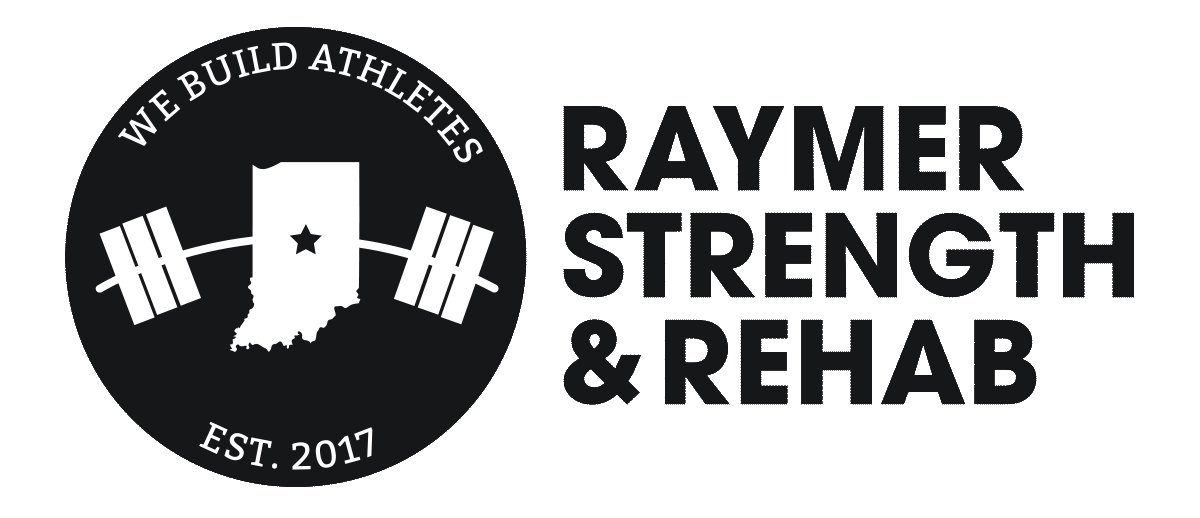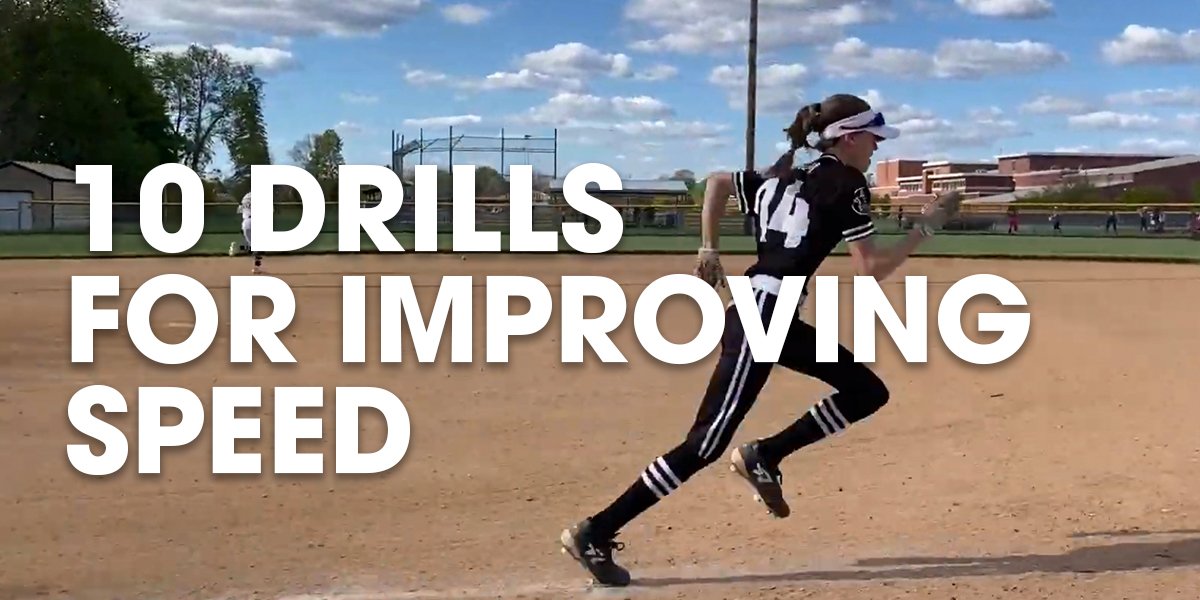Improve your speed with 10 speed drills and training best practices
Looking for ways to help your athletes gain speed? You’ve come to the right place. You’ll get some beginner rules of thumb and a some drills that take little-to-no equipment.
This is not meant to be a comprehensive guide for the end-all-be-all of improving speed. A qualified sports performance coach (Hey, that’s us! Nice to meet you!) can help athletes advance more efficiently and effectively through mechanics work and a strength training program, but this will give you a great place to start if you are just beginning your learning journey.
First, let’s align on what we’re talking about. When we say “speed” in this article, we are referring to the ability of an athlete to move from one point to another in a straight line as fast as possible, aka, linear speed.
Speed is a function of stride length times stride frequency. Remember this– it’s important.
4 Speed Training Best Practices
1. Work-to-Rest Ratio
For any of these drills, it’s CRUCIAL to give your athletes enough of rest in between reps.
To build speed, we should be targeting the Phosphagen (5-10sec) or Fast Glycolysis energy system. This video from the NSCA explains the basics on human energy systems. These energy systems use up to 30 seconds of work with anywhere between 3 to 20 times that for additional rest.
At Raymer Strength, we use a 1:6 work to rest ratio at a minimum. In practice, if an athlete sprints for 5 seconds, they would get a minimum of 30 seconds rest. We err on the side of more rest in our programming. Studies indicate that a wide range of rest intervals can benefit different types of sprint performance like repeatability of sprints, distance, etc. In this article, we’re solely focused on developing top-end speed.
“Coach, that seems like an awful lot of rest,” you say. I get it. It can feel like you aren’t being productive. However, including a proper work-to-rest ratio ensures that you are working the correct energy system and that your athlete is not turning their speed work into conditioning or endurance training. If you cross that line, you’re no longer working on speed. You’re probably getting slower.
2. Strength Training
Pairing speed work with a comprehensive strength training program is the most effective method of improving speed, though sprint work by itself is better than nothing (and certainly cheaper). A qualified performance coach can ensure that your athletes are improving the force they can produce into the ground and the force that they can absorb. Producing and absorbing force helps with acceleration and deceleration and can be major keys in reducing the chance of injury.
For more information on this, check out our series:
Producing & Absorbing Force 101: Linear Extension
Producing & Absorbing Force 101: Deceleration
3. Learn Sprint Technique
Speed is a skill, not just genetics, and becoming technically proficient can make the most of an athlete’s speed potential. There is too much about sprint mechanics to cover in this article, but head over to our “Speed Kills: The First Step to Getting Faster” to learn more about how we coach the first step of acceleration.
4. Measure, measure, measure
You won’t know if you’re improving unless you measure your athletes’ performance. We use a laser timing system for 99.999% accuracy, but even hand timing is better than nothing as long as you are consistent in your method.
10 Speed Drills for Athletes
Mechanics Drills
Mechanics matter. Arm drive, leg drive, power, and posture factor into efficient and effective acceleration and maximum velocity. We’re not going to teach you those mechanics here– that’s requires in-depth learning and experience. However, these 10 drills are good places to start, and a performance coach can help refine individual technique.
1. Seated Arm Drill
Yes, arms factor into speed! Sprinting doesn’t just use the lower body. This drill isolates the upper body and forces the athlete to work to stay upright. With Tessa here, we’re also working on removing any flaring out of her elbows.
2. Standing Arm Drill
A progression of the seated arm drill, this drill is a good transition into a more athletic stance before sprinting.
3. Knee Drive Wall Drill
Doing knee drives against the wall puts your body at the ideal angle for acceleration. This is great for working on posture and quality foot contact.
4. Falling Start Drill
This drill also puts your body into a better angle for initial acceleration, and it’s a great progression from the wall drills.
5. Stride Length Drill
Remember– speed is a factor of Stride Length x Stride Frequency. This drill focuses on stride length, helping athletes learn how to adjust the length of their stride through their acceleration phase. Cones are placed closer together at the start, and farther away towards the finish.
6. Standing Lateral Start Drill
In this specific video, we also have our athlete somewhat simulating a batting position, but outside of that, this drill is not truly sport specific. It works on generating hip extension and lateral power into the acceleration phase.
7. Half Kneeling Lateral Start Drill
This drill is another good progression from the standing lateral start and is great for athletes that have the a good handle of basic mechanics. It generates more hip extension and develops explosive lateral power. There’s a few different ways to do this (alternating between open and closed stances, and alternate knees), but it’s a great drill for athletes that need to move in all different directions and angles in the field of play (aka, everyone but track athletes).
8. Prone (Lying) Start Drill
This is a good progression drill for athletes that have the basic mechanics down. It’s is focused on building initial acceleration since it removes most of the momentum from of an otherwise standing start.
Practice Drills
9. Traditional Sprints
No video needed. Sprint a short distance as hard as you can! 10yds, 20yds, 40yds, and 60 yds are appropriate distances, depending on your sport. Just practicing sprints with a good work-to-rest ratio will help you get faster.
10. Flying Sprints
Flying sprints are performed as “build up sprints.” The athlete is not measured from the start, but rather the measurement starts a distance away from their starting position, allowing them to build up to max velocity. For example, the athlete could have a 10-30 yard build-up of leading into a full-speed sprint of 10 yards, achieving their max velocity. This variation also helps an athlete work on stride frequency.
Flying sprints are also great tools for coaches to identify where an athlete needs to improve for their speed. Are they weak in initial acceleration? Or is it in maintaining top-end speed?
Conclusion
All athletes can benefit from working on sprint mechanics and sprint practice to improve linear speed with little-to-no equipment, as long as they are cleared by a medical professional and are allowed the proper work-to-rest ratio.
Combined with a comprehensive strength training program that both assesses the athlete’s movement mechanics and also works on both force production/force absorption, athletes can make larger speed gains at a quicker rate and are more likely to reduce the chance of injury.
If you’re interested in training with us (in person or remote), get in touch.
Further reading: Research studies on improving speed
Effects of Strength Training on Squat and Sprint Performance in Soccer Players
Styles, W. J., Matthews, M. J., & Comfort, P. (2016). Effects of Strength Training on Squat and Sprint Performance in Soccer Players. Journal of strength and conditioning research, 30(6), 1534–1539. https://doi.org/10.1519/JSC.0000000000001243Comparative Effects of In-Season Full-Back Squat, Resisted Sprint Training, and Plyometric Training on Explosive Performance in U-19 Elite Soccer Players
de Hoyo, M., Gonzalo-Skok, O., Sañudo, B., Carrascal, C., Plaza-Armas, J. R., Camacho-Candil, F., & Otero-Esquina, C. (2016). Comparative Effects of In-Season Full-Back Squat, Resisted Sprint Training, and Plyometric Training on Explosive Performance in U-19 Elite Soccer Players. Journal of strength and conditioning research, 30(2), 368–377. https://doi.org/10.1519/JSC.0000000000001094Effects and dose-response relationships of resistance training on physical performance in youth athletes: a systematic review and meta-analysis
Lesinski, M., Prieske, O., & Granacher, U. (2016). Effects and dose-response relationships of resistance training on physical performance in youth athletes: a systematic review and meta-analysis. British journal of sports medicine, 50(13), 781–795. https://doi.org/10.1136/bjsports-2015-095497


